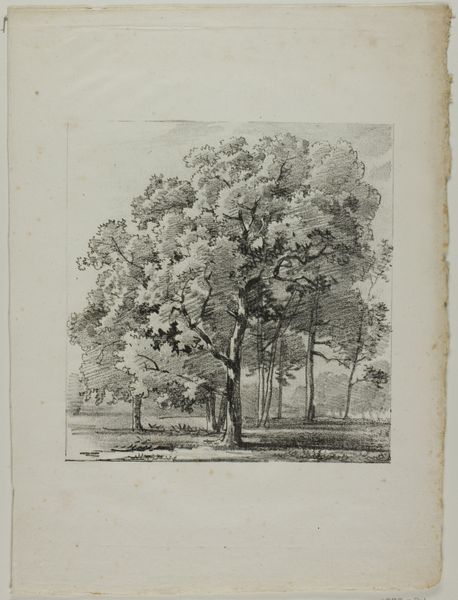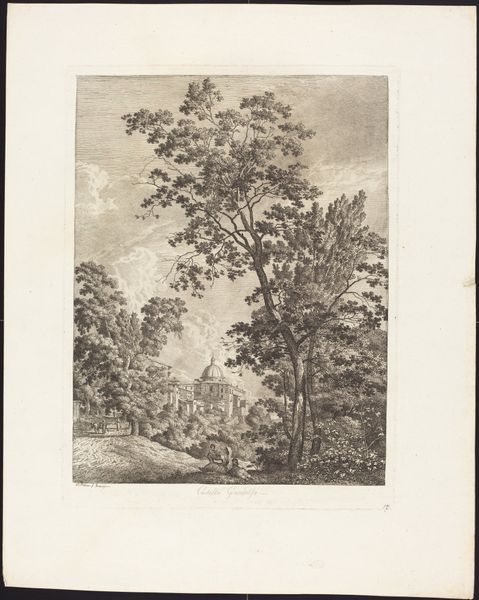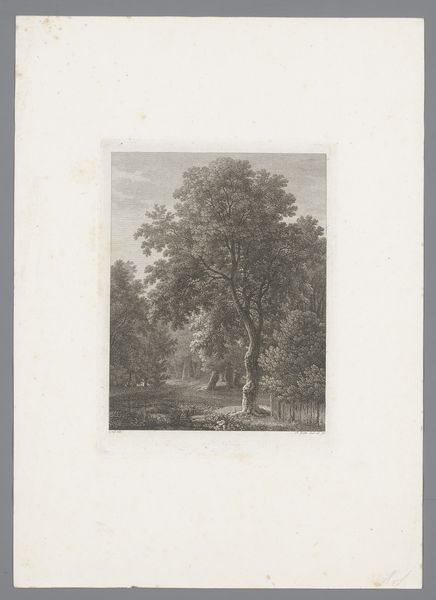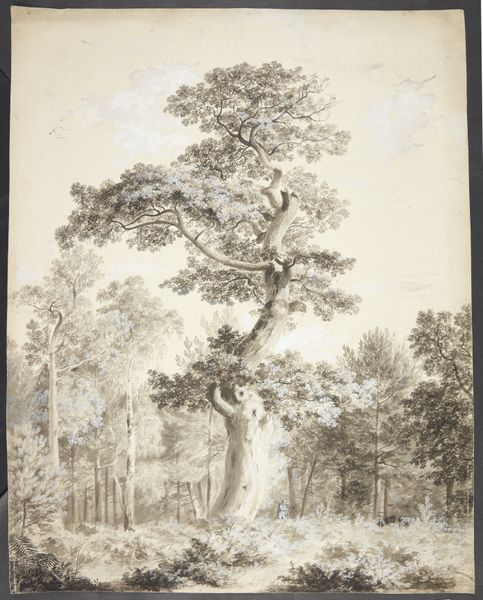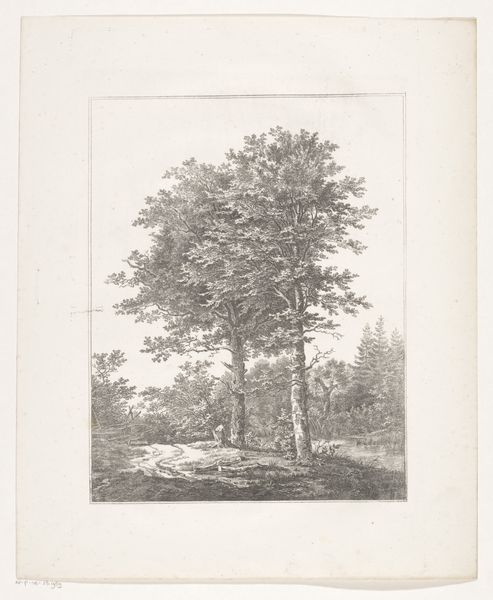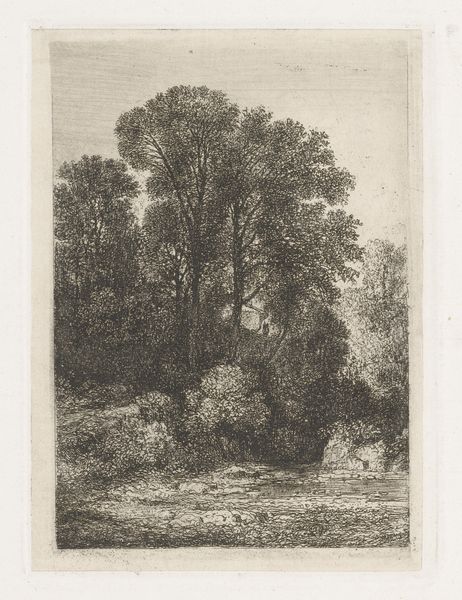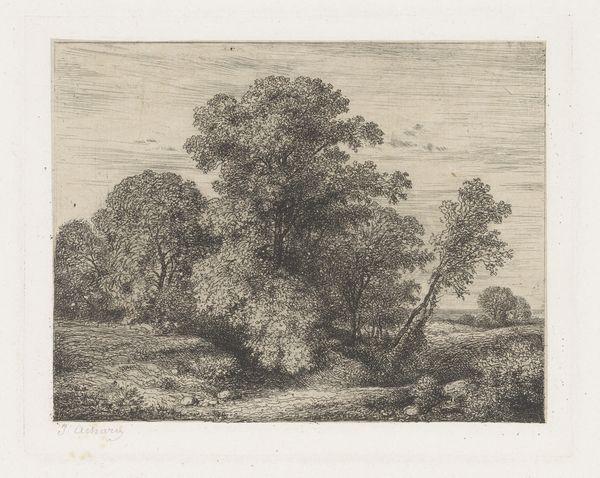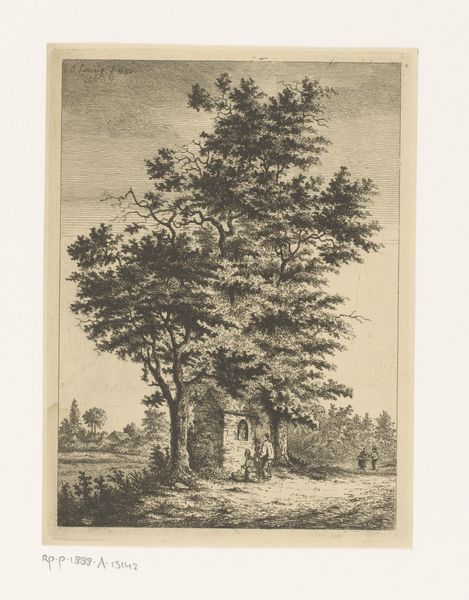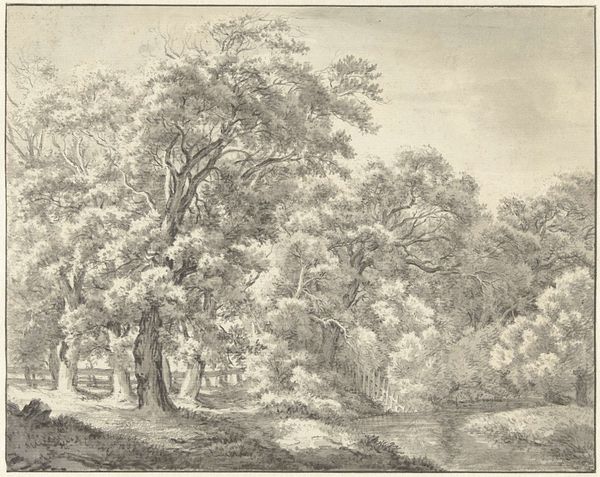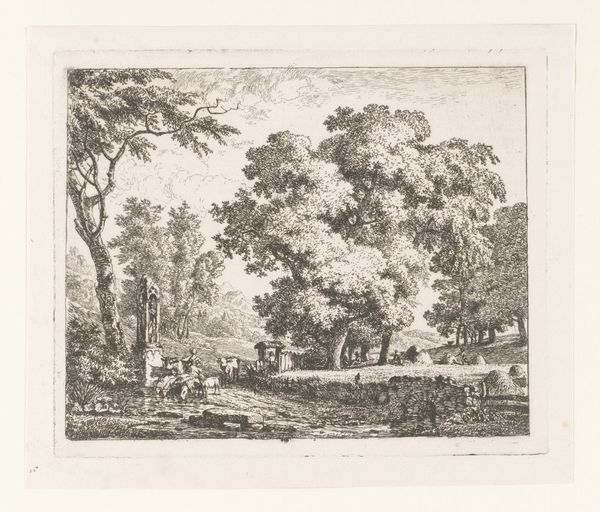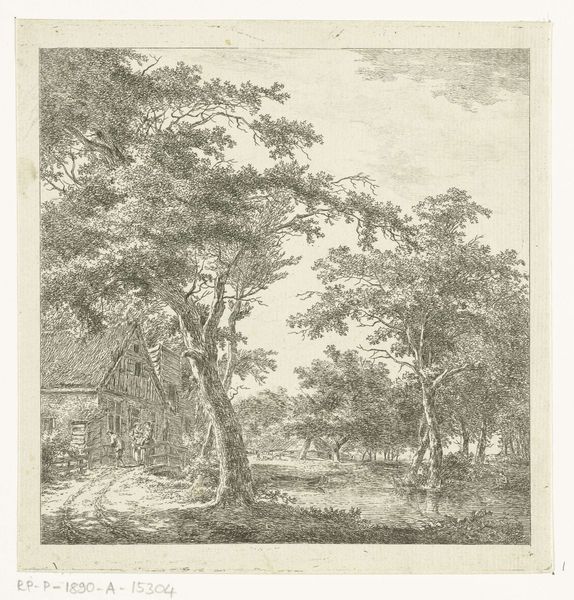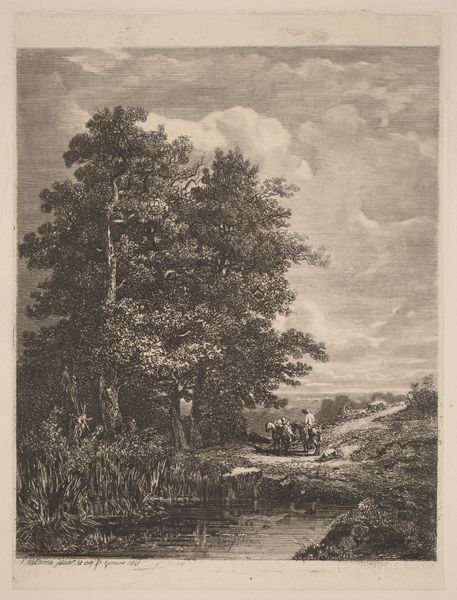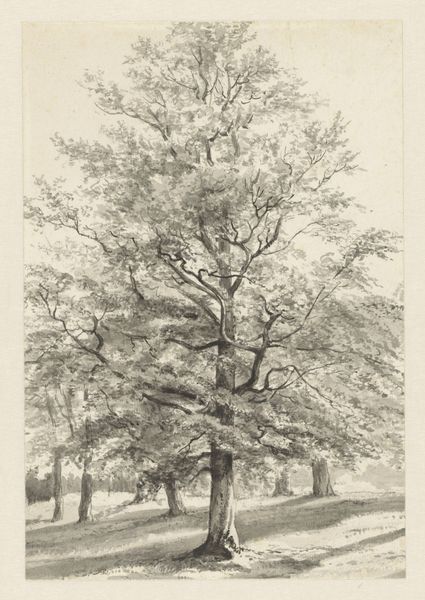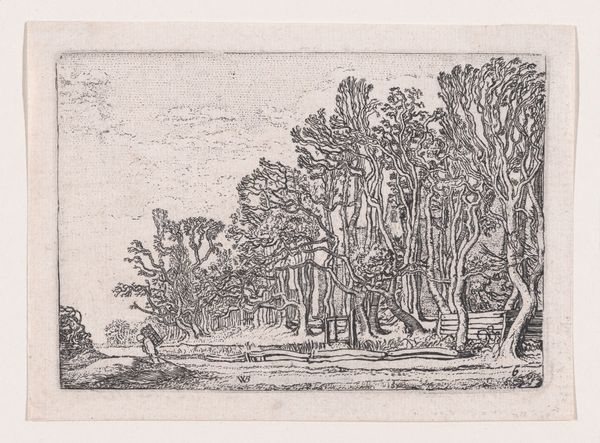
etching
#
etching
#
landscape
#
etching
#
form
#
forest
#
romanticism
#
line
Dimensions: height 252 mm, width 204 mm
Copyright: Rijks Museum: Open Domain
Editor: Here we have Heinrich Theodor Wehle's "Bos met eikenbomen," created between 1788 and 1805, an etching. It's incredibly detailed, but also feels quite contained. What can you tell me about this print? Curator: As a materialist, I'm drawn to the process itself. Etching allowed for mass production and distribution of images like these. Think about it: a forest, a traditionally inaccessible space, made available to a wider consuming public through this repeatable process. How does that change the perception of nature? Editor: That's fascinating. So, it's not just about the pretty picture, but about the industrialization of art? Curator: Precisely. The materiality of the etching, the labor involved in creating the plate, the availability of ink and paper - all become integral to understanding the image. Consider how the use of line dictates form in the style of romanticism. What kind of labor goes into that and what economic relationships supported this work? Editor: I see. It makes me consider the relationship between the artist, the patron, and the potential buyers. Would a print like this have been more affordable than an oil painting, widening access to art ownership? Curator: Exactly. And with that affordability comes a new kind of artistic consumer. The landscape becomes a commodity. Were these consumers from rural environments, or urban landscapes seeking a representation of nature that perhaps did not represent their industrial reality? Editor: That puts a new spin on the Romantics' supposed love for nature. Curator: Indeed. By focusing on the material production, we can understand Romanticism as less a rejection of industrialization, and more a complex engagement with its processes and implications. I find that approach a worthwhile investigation into this piece. Editor: Thanks, that was insightful. It really changes how I see not only this print, but landscape art in general. Curator: My pleasure! Now consider, what materials might you employ to similarly render your world in the 21st century?
Comments
No comments
Be the first to comment and join the conversation on the ultimate creative platform.
